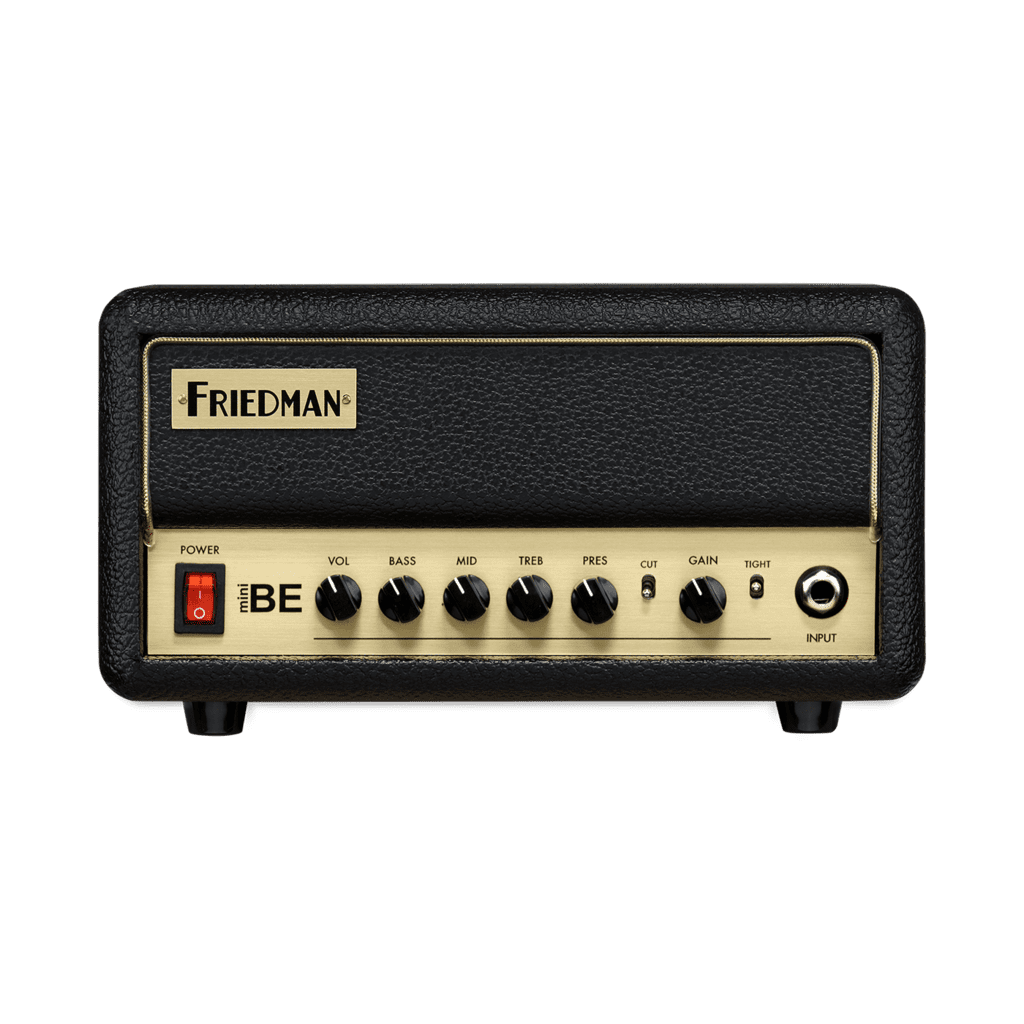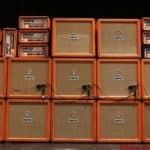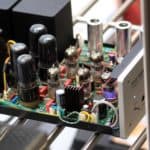Picking the right amp for you is hard.
There are many options and different models to choose from, but a common question I often get is: “How many watts should I get?”.
The answer, as with many things in life is “It depends”.
But I’m not trying to be mysterious here. It really depends on the use you are going to give to that amp.
Don’t worry, though, I’m going to tell you all you need to know to make the correct choice for you in this article
If you just want a short answer and keep going, here it is:
Both low watt and high watt amps are amazing, however, each will be better for fulfilling different needs. Low power amps are cheaper, more portable, and allow you to get tube saturation at lower volumes. High-power amps have more options and features, will give you lots of headroom, and be louder at gigs.
For those who are still here, in this post I will try to answer the most usual questions you might have about both sides of the power spectrum of amps.
I will talk about the benefits and drawbacks of both high and low-watt amps.
Finally, I will give you my insights into what I think is better for different kinds of players.
Are you ready to get started?
Let’s go!
Are higher wattage amps actually louder?
More watts in an amp mean more volume. However, the increase in volume is not linear as you add watts. This means that the marginal gain of adding extra power is decreasing. To be extra clear: A 100-watt amp is not double as loud as a 50 watt one. Actually, it is only slightly louder.
Another mind-blowing example is that a 100-watt amp is just twice as loud as a 10 watt one. This might give a whole different perspective about the amp market and different amp usabilities.
In any case, there are remarkable differences between smaller and bigger amps, and we will discuss them in more detail later. Keep in mind that volume is not everything.
What makes an amp louder?
There are many factors that define the loudness of an amp, of course, the power output (measured in watts) is very important, but also the kind of power section, being it tube or solid-state, the quantity and quality of speakers, and their impedance are very important factors to determine loudness.
The raw watt numbers, as I mentioned earlier are a power measurement, and of course, more watts mean more volume, with the caveat we already talked about.
The power section of an amp, the part of it that generates this energy, is usually tube-driven or solid-state. Without going into technical definitions, tube amps of the same power as solid-state ones, sound louder.
Quantity and quality of speakers are obviously other defining features for volume output. The more speakers you are moving, the more air you will be displacing. The quality of them will determine how sensible are to the input they get. More sensitive speakers sound louder.
Impedance is the other characteristic I mentioned and it is the resistance the speaker has against the power that’s trying to move it. When you match the impedance of the output of an amp with the speaker’s input you will have the maximum volume delivery possible between them.
Mismatching is okay, but it comes with hindrances.
Does higher wattage mean better sound?
A higher wattage is not correlated with a better-sounding amp necessarily. However, usually, when comparing different kinds of amps it’s likely that the higher watt alternative will be of higher quality and nicer sounding. If we compare the same amp with different output powers, it should sound the same.
Something to consider is that bigger amps usually have more controls and options than smaller ones, giving you the possibility to tweak the tone further. This might result in a better sound, for specific use cases.
The main advantage in sound of a more powerful amp would be the possibility of having louder cleaner tones. We will talk about this later.
What are the benefits of a high-watt amp?
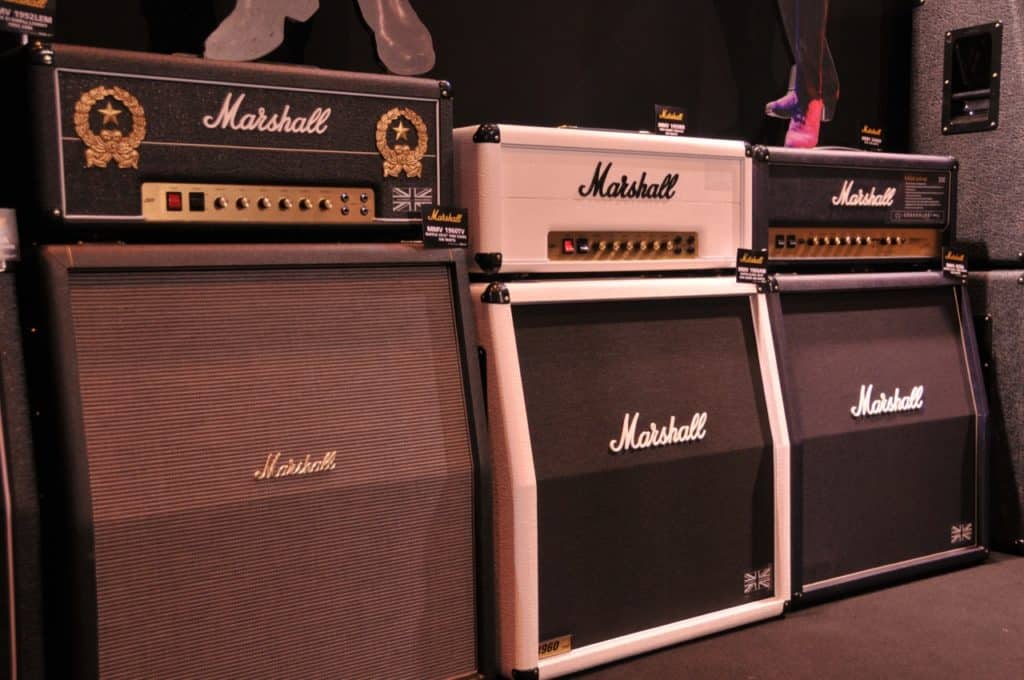
It’s time now to get down to the specifics, in my opinion, the main benefits of a high-watt amp are the following:
Loudness
An obvious one, and as I discussed earlier, more watts means louder, although the relationship between watts and loudness is not linear.
In many use cases, such as gigging, a small amp will not cut it. You will have to take out the big guns if you want to be heard over a drum kit or in a medium or larger venue.
Options and controls
More powerful amps are bigger and more expensive. This means that players who pay this premium get extra perks.
The majority of higher-watt amps have more controls and options than their smaller versions, and this is the industry standard.
If you are a tweaker by nature, then you might have to consider something louder.
Headroom
Last but not least, and perhaps the main reason to pick up a high-watt amp is the headroom it will give you.
To be more specific, the smaller the amp, the harder it would be to keep it sounding with a clean tone at high volumes.
Amps have a breaking point when they start distorting, and this is not a bad thing. Many players love this sound, and this is the way originally distortion was achieved.
However, if you want to play clean and be loud, the only option you have is to get more watts.
What are the drawbacks of a high-watt amp?
Clearly, such beasts have their drawbacks. Although they are completely subjective and many might not worry you in particular.
Here are what I consider the main cons of a high watt amp:
More expensive
As I mentioned earlier, you pay for the extra power. This premium will usually come with more options and controls, but the cost might not cut it for you.
Lots of players prefer simpler and cheaper amps that would sound just about the same, but quieter.
Bigger and bulkier
When talking about tube amps, in almost every case, more watts mean bigger units. In the solid-state realm, this is not always true, however.
If you have enough space this would not be a problem, but if you are a bedroom player, a high-watt amp would not only be inconvenient, but unplayable.
They require volume to sound good
Many will argue against this one, but it’s a general claim, keep it civil.
A high-watt amp will lose detail and have a different response at lower volumes. Of course, you can always use the master volume to keep things quiet, but you will never achieve the power stage saturation that many look for by doing so.
To overcome this problem, there are amp attenuators that let you set your amp to 11 and send the signal through them. They then give you the option to control the output volume.
This is not the same as controlling volume with the master of the amp. With an attenuator, your amp will be running at full power and having its power section cranked and saturating.
What are the benefits of a low-watt amp?
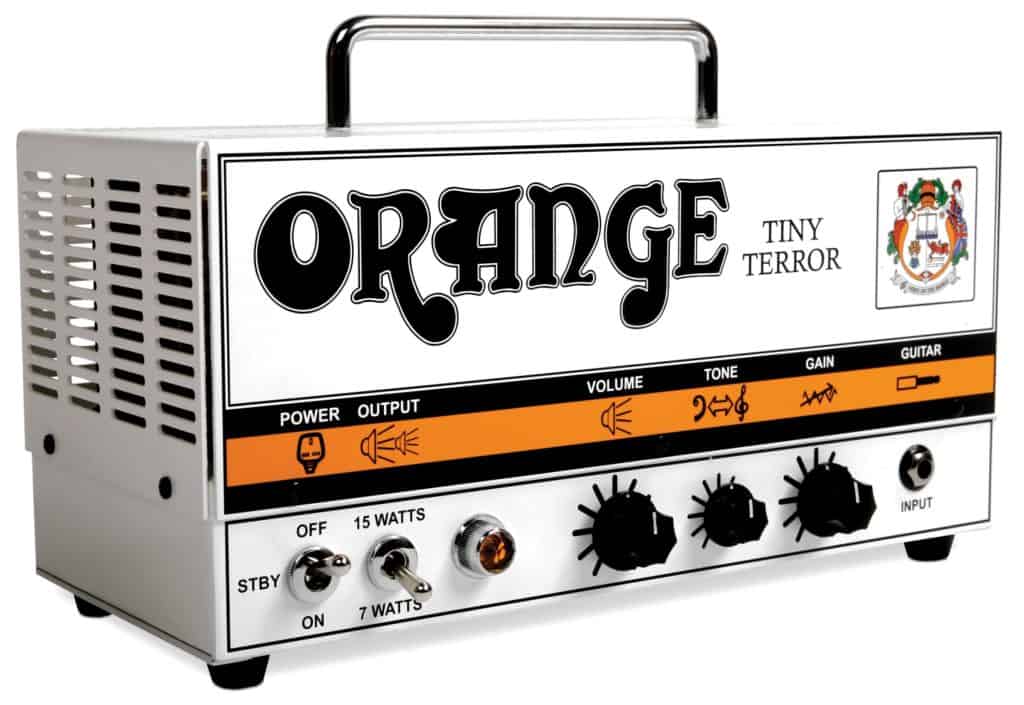
Now it’s time to make a case for the smaller, humbler little amps that the industry is slowly gravitating towards.
Not all players take their amps out of their homes, and with sound systems at venues getting better and cheaper year after year, high-watt amps are starting to become a novelty and a professional or collector thing.
Here are the things that make low-watt amps great:
Portability
I said that not many players use to move their amp around. However, those who do will surely be more comfortable having to transport a small, light-weight lunchbox head or a tiny combo amp.
They are more convenient, and you don’t need a truck to go to the rehearsal room and back home every weekend.
Power stage saturation
Less power means less volume, as I discussed earlier, and small amps are nowadays even less powerful than a watt. This allows the players to crank them up to their max settings, generating that sweet power stage saturation that gave birth to modern distortions.
That saturation is one of the most sought-after tone characteristics for many, and it is very hard to achieve with big amps unless you are ok with having your face melted.
Especially when you play at home.
Good sound at low volumes
Small amps are big amps at a scale, all the perks of cranking a big amp can be achieved at conversation level volumes. The response and detail in tone are there.
A big amp won’t sound as good at bedroom level.
What are the drawbacks of a low-watt amp?
Of course, nothing is perfect, and you will find cons in choosing a low-watt amp.
It’s up to you to decide if the pros outweigh these cons.
Here is what I think are the main drawbacks of small amps:
Limited volume
This can be seen as a feature or a setback. If you just want to play at home, you probably won’t even reach the max volume on a small amp. However, if you rehearse with other musicians or play small gigs, a small amp won’t cut it.
If you want to use clean tones, a low-watt amp will be unusable for gigging, unless, of course, you mic it up and go through the house speakers.
Fewer controls and features
This is a marketing decision by the amp makers. Although the units are virtually the same, except for the number of tubes in the power section, companies tend to restrict the number of controls and features in lower watt units, to make the players gravitate towards bigger, more expensive options.
That’s completely fair, it’s their business, but if you are a tweaker, or want slightly more sophisticated features, this might hurt your tone.
No headroom
The limitation of power directly impacts the available headroom in the amp. It will be almost impossible to get clean sounds at high volumes with low-watt amps since they will have their power section pushed to the limit.
How many watts do you need to play live?
If you can’t mic your amp and go to the house speakers, you will need at least 30 watts to be heard above a drum kit or in a medium-sized venue. This is considering you don’t need your amp sounding clean. For clean tones, the minimum might go up to 60 watts, with 100 watts being the standard.
It is now very common, however, for a lot of venues or events to have professional sound at the disposal of the artists. If this is the case and you could get your amp mic’d up, there will be no problem with bringing a smaller unit to a show, since the heavy lifting will be done by the PA system.
Can you gig with a low watt amp?
You will need at least 30 watts to be heard if playing with a drummer. This is considering you don’t play clean tones. However, if the venue or even has a professional sound system you could go to the house speakers allowing you to use any kind of amp.
The tendency, nowadays, as I mentioned earlier is to keep the stages as quiet as possible and make all the sound go through the soundboard of the venue. This allows for better monitoring and an overall better sounding experience for the audience.
Which wattage is better for you?
It’s now time, with all that the info gathered, to make some recommendations about which I think would be better for different kinds of players.
However, here in GearAficionado, I always encourage you to try out the gear before making a decision, since there are nuances that you could only hear or feel in person.
Having said this, let’s go ahead with my insights:
Are you going to play with a drummer?
If you are going to play with a drummer, a small amp will probably not cut it. You will have to give it a try if that’s possible.
You could have some acceptable results with 15 watts, but usually, the recommendation is a minimum of 30, and this is if you don’t need sparkly clean tones.
Do you need to transport your amp on a regular basis?
Do you have to take your gear to the rehearsal room? Do you gig every weekend?
For many working musicians, a small amp will be just more convenient and save them a lot of back pains.
Bigger amps are extremely heavy and take up a lot of space.
Best wattage for bedroom players
The good thing about modern low-watt amps is that they are designed with the bedroom player in mind. Think of the Orange Terror line for instance.
These amps come with switchable power output, allowing you to run them at 0.5, 1, 5, or 15 watts.
This is great since it will allow you to find the sweet spot for the tone you are looking for at a certain volume.
I think up to 30 watts will be fine for bedroom or home use. Go bigger and you will start having extra power unused most likely.
Best wattage for gigging
As I mentioned earlier if you plan on gigging it will depend if the venues can mic you up. If not, less than 30 watts won’t be advisable.
In this case, I will personally go for 100 watts since I like to keep my clean tones clean, but it will depend on what style of music you are playing and how overdriven you like your tone.
Real amp vs simulation: The best of both worlds
Technology has evolved a lot in the last decade. Digital amp modeling once was a gimmick, but now is a very competitive alternative that has some of the benefits of both high-powered and low-powered amps.
Of course, a purist will say that they won’t ever sound the same, but a pragmatic will argue that they sound good enough. Your audience won’t say anything since they would never know.
A multi-effect pedalboard, a modeling plugin or pedal, or whatever the source of a digital amp will allow you to get any tone at any volume with maximum portability, a lot of control and options, and all the headroom you could ask for.

Hello there, my name is Ramiro and I’ve been playing guitar for almost 20 years. I’m obsessed with everything gear-related and I thought it might be worth sharing it. From guitars, pedals, amps, and synths to studio gear and production tips, I hope you find what I post here useful, and I’ll try my best to keep it entertaining also.

